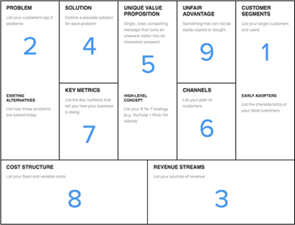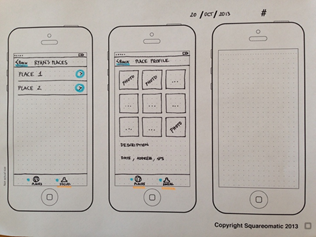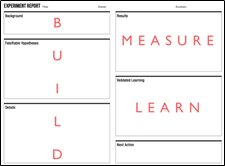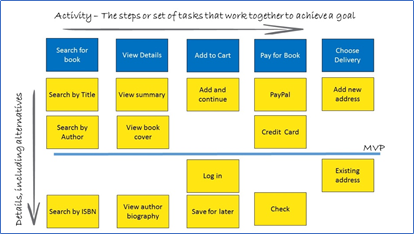
Interesting fact: 75 percent of all companies struggle when to execute innovation projects. While most of them do manage to get through the ideation phase rather successfully – ah, the thrill of it all –they somehow run into a wall once the initial excitement wears off. ‘Just do it!’ is what a certain American sports brand would say, and it’s certainly what everyone involved in the project is thinking too. Months later, however, everyone’s still saying ‘we should just do it’. Sounds familiar? Read on and you’ll know exactly what to do to turn your next innovation idea into a success.
It’s all about the experiment
As we explained in a previous post, the first step towards innovation is coming up with a viable idea. Once you know your customer well enough to determine which problem you’re going to solve for them exactly, it’s time to take your viable idea and have some good old fun with it. Yep, this is where you start experimenting! Don’t go about it willy-nilly, though. Discover our tips first!
1. Get out of your bubble
Brainstorming sessions, desk research and insightful chats with your team mates are now behind you. Things are about to get real! Unless… you’re about to build something nobody needs. To avoid shedding blood, sweat and tears over a product that ultimately turns out to be useless, it’s crucial to get out of your bubble and step into the real world. Take your assumptions to the customers you have in mind first, so you can verify whether they actually confirm what you’re assuming.
2. Create a lean canvas
Years of innovation experience have taught us that creating a lean canvas is a great way to list your assumptions in a structured manner, covering all relevant aspects of your business model – that’s right, you’re working on a business model now, not just an idea. Writing the first draft of the lean canvas is, ideally, a team effort. Jot down your assumptions concerning customer segmentation and potential problem areas. Define the solution and its USPs, and end with the cost structure and revenue streams. This will help get everyone in the team on the same page, and make communicating with stakeholders (e.g. management) significantly easier.

Once you’ve got your lean canvas in place, identifying the most impactful elements of your business model (both positive and negative) will prove a breeze.
3. Experimenting means getting chatty
Next, it’s time to take your lean canvas and use it to verify (objectively) whether your assumptions are indeed correct. This is where the experiment really starts.



Experiments can take many shapes and forms, but they should always be as fast and cheap as possible. Don’t forget that conducting interviews and carrying out surveys among your target customers will never go out of fashion – for good reason! Surveys yield loads of input over a short period of time, while interviews provide you with valuable insights you would never have discovered by yourself.
4. Create a minimal testable product
Don’t hesitate to create a mock-up – it doesn’t even have to be complicated. For example, if your experiment concerns the UI of a new app, a simple sketch on paper can speak volumes. This is what we call a minimal testable product.

As a next step, you stop assuming and start confirming. After all, before you begin building your minimum viable product you want to make sure your assumptions are correct. We recommend using Lean Canvas at this stage, a particularly practical tool that allows you to describe the key points of the business model you’re developing in a very concise manner.
A famous example of how to verify whether assumptions will lead to a minimal testable product is what Dropbox did to explore consumer interest before building their final product. They made a video that looked like a demo of the final product and shared it with their target customers’ online communities. Within days, thousands of people signed up because they wanted to buy the product.

5. Define your minimum viable product
Next up is defining your minimal viable product. Arguably the best way to structure your experiments to obtain decent validated learnings is using an experiment report; a very simple canvas in which you write down the assumptions you want to test, the way you’re going to test them and finally what the expected outcome of the experiment will be. It’s important to always formulate your assumptions as yes/no questions. This will make interpreting the results of the experiment significantly easier: either the assumption gets validated and you’re on the right track, or it doesn’t and, hence, requires adapting in your lean canvas. Once adapted, your lean canvas will tell you which new experiment to conduct next.

Applying this iterative approach will gradually transform your lean canvas and make it much easier for you to acquire more funding and achieve a minimal viable product. Any initial uncertainties have been reduced to a minimum and, if all goes well, your team now feels much more confident that what they’re about to build is something customers are really looking forward to.
6. Map the story
Another useful technique to clearly define your minimal viable product is story mapping. A story map is a visualization of the customer journey that links each step to relevant product features or (limited) use cases. This map arranges user activities along a horizontal axis in rough order of priority or in terms of how your product will be used. The higher up the vertical axis, the more sophisticated the implementation. It can range from a skeleton to the final product, with the minimal viable product somewhere in between.

As you can see in the example above, story mapping, if done right, makes it very easy to discuss the prioritization of your product’s functionalities with your team in an agile manner. Adapting priorities becomes as simple as moving a card up or down the story map.
De-risking means experimenting
It should be clear by now that there’s plenty you can do to make the idea you’re pursuing more tangible and concrete. Many people wrongly believe innovation is risky and expensive, but it certainly doesn’t have to be that way – as long as you’re ready to experiment in a structured manner. The world may be moving at a rapid pace, but it’s okay to take things step by step. Just remember to start small and progress by experimenting based on certainties rather than assumptions.
Sharing is caring
Did you like what you just read? Please share or like this post, so others can learn from it too. Should you care to learn more about any of the topics mentioned in this article, don’t hesitate to give us a shout!




